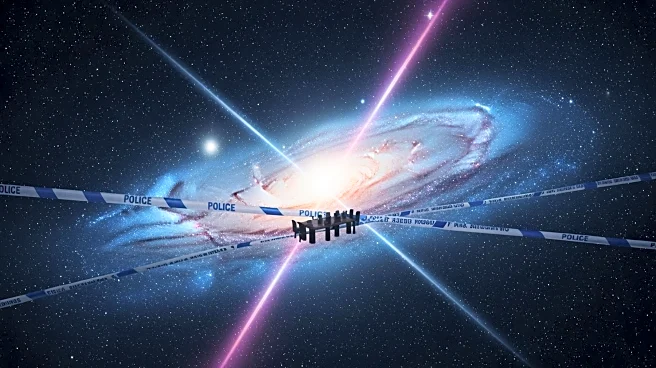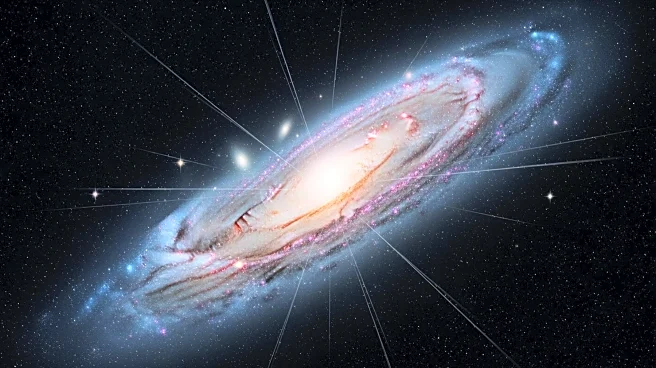What's Happening?
Astronomers are examining a peculiar concentration of gamma rays near the center of the Milky Way, which has been observed since 2009 by the Fermi Gamma-ray Space Telescope. A recent study published in Physical
Review Letters suggests that this gamma ray excess might be linked to dark matter, a form of matter that constitutes about 85% of the universe's mass but remains largely undetected. The researchers propose that the gamma rays could result from collisions of dark matter particles, although alternative explanations, such as emissions from neutron stars, are also considered. The study's simulations support the dark matter hypothesis, but the findings are not yet conclusive. The team plans to continue their research with the upcoming Cherenkov Telescope Array, which will provide more advanced gamma ray observations.
Why It's Important?
The potential discovery of dark matter through gamma ray observations could significantly advance our understanding of the universe. Dark matter is believed to play a crucial role in holding galaxies together, yet it has eluded direct detection. Confirming its presence through gamma ray emissions would provide a breakthrough in astrophysics, offering insights into the fundamental composition of the universe. This research could also influence future scientific endeavors and funding in the field of particle physics and cosmology. If dark matter is confirmed as the source of the gamma rays, it would validate theoretical models and guide future experiments aimed at uncovering the nature of this mysterious substance.
What's Next?
The research team plans to utilize the Cherenkov Telescope Array, a next-generation telescope designed for gamma ray observations, to gather more data. This could help confirm whether the gamma rays are indeed linked to dark matter or if they originate from other sources, such as neutron stars. The findings from this telescope could either support the current hypothesis or present new challenges, prompting further investigation. The scientific community will be closely monitoring these developments, as they could reshape current theories about the universe's structure and composition.
Beyond the Headlines
The study of gamma rays in the Milky Way not only has implications for understanding dark matter but also highlights the challenges of scientific research in astrophysics. The difficulty in directly detecting dark matter underscores the need for innovative approaches and technologies. This research also raises questions about the nature of the universe and the limits of human knowledge, encouraging a broader philosophical reflection on our place in the cosmos.











